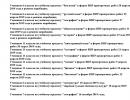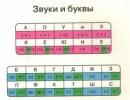Red radish. Beneficial features
How much does red radish cost (average price per 1 kg)?
Moscow and Moscow region.
In fact, it is quite difficult to call red radish one of the varieties of the plant called radish. The fact is that some experts claim that red radish is a hybrid of radish and radish, while other experts defend the opinion that such a variety does not exist at all - it is an ordinary radish, only much larger.
Meanwhile, in some sources you can find information that red radish belongs to the mid-early varieties of a related plant, the growing season of which from germination to technical ripeness ranges from 60 to 80 days. Ripe red radish roots are characterized by fairly large sizes - 200-300 grams, round shape and good taste.
The color of the skin of red radish determines the very name of this vegetable - bright red with a crimson tint. The pulp of red radish, like that of radishes, is dense and juicy, snow-white in color. By the way, for summer consumption, red radish is usually planted in early spring, and for winter storage - in the 1st decade of July.
Red radish is used for fresh consumption, but it is also excellent for long-term storage during the winter. Most often, this root vegetable acts as an excellent base for preparing fresh salads. For example, many housewives like to add eggs and cheese to salads, but they do not take into account that such a mixture is absorbed by the human body rather difficultly and for a long time. But with the addition of red radish, these products are digested just fine, bringing great benefits to the body.
Not only the taste qualities of this root vegetable are valued - the beneficial properties of red radish are also widely known. First of all, its consumption improves appetite, and therefore it is recommended to eat salads with this vegetable as an aperitif. In addition, it has been established that red radish is capable of removing harmful elements from the body, in particular toxins and wastes.
The special properties of red radish, which are relevant for anemia, are also important - for this purpose, doctors recommend mixing the juice of radish, beets and carrots. One cannot help but mention the wonderful properties of red radish in combination with natural honey - such a natural medicine helps with colds. Surely most parents soldered their sick children with the juice formed when filling a cavity in a fresh vegetable with honey.
Calorie content of red radish 20 kcal
Energy value of red radish (Ratio of proteins, fats, carbohydrates - bzhu).
a brief description of
Red radish is a variety of garden radish from the cruciferous family. Although many botanists believe that this is a radish hybrid. Other experts are sure that this is a type of black radish. Disputes are still ongoing and there is no consensus on this matter.
Description and photo
This root vegetable is round or cylindrical in shape and looks similar to a large radish.. All its varieties have the same red or crimson color as radishes, and inside there is dense, white pulp.
The taste is slightly spicy, with soft notes. The weight of the vegetable can reach an average of 200-300g. Red radish belongs to the early and mid-early varieties. The growing season from planting to technical maturity ranges from 40 to 80 days.



Differences from other species
Chemical composition
 Red radish contains a whole range of useful vitamins, acids, and essential oils. The vegetable can be used as an adjuvant for the treatment of vitamin deficiency, because it includes:
Red radish contains a whole range of useful vitamins, acids, and essential oils. The vegetable can be used as an adjuvant for the treatment of vitamin deficiency, because it includes:
- vitamins A, B, C;
- acids - nicotinic, salicylic, folic;
- essential oils;
- minerals – calcium, magnesium, iron, potassium.
The root vegetable contains only 20 kilocalories per 100 g of product, so it is popular among those who want to lose weight.
Benefits and harms
- It contains dietary fiber and a large amount of fiber, which stimulates digestion, which has a beneficial effect on the functioning of the gastrointestinal tract.
- Eating radish in small quantities improves the production of gastric juice and some digestive enzymes.
- The content of vitamins and essential oils in the root vegetable improves well-being during bronchopulmonary infections.
- Potassium strengthens the heart muscle and blood vessels.
- Radish has diuretic and choleretic properties.
- Red radish juice helps against the formation of cholesterol plaques and serves to prevent atherosclerosis.
But it cannot be said that this root vegetable has only beneficial properties. In some cases, eating red radish can be harmful:
- For example, pregnant women should use this product with caution. Essential oils can affect the tone of the uterus, which can lead to miscarriage or premature birth.
- If you have serious diseases of the gastrointestinal tract, radish will not only not help, but will also do harm. All contraindications are related to the fact that the substances contained in this vegetable affect the mucous membranes.
List of contraindications for use:
- gastritis;
- stomach ulcer;
- increased stomach acidity;
- heart disease;
- duodenal ulcer;
- liver diseases.
List of varieties
All varieties of red radish are hybrids obtained from crossing Chinese or Japanese hybrids with green and other types of radish.
They are adapted to the climate and conditions of central Russia. There are several popular varieties.
Lady
- A round-shaped vegetable of raspberry color with light white flesh.
- It belongs to winter varieties with an average ripening period (60-65 days) and is intended for long-term storage.
- Tolerates transportation well.
- Prized for its mild, slightly spicy taste.

Red winter
- Root vegetables are small in size, round in shape.
- Fruit weight is no more than 200g.
- Suitable for long-term storage.

Red giant
- The shape of the fruit is elongated, reaching 15 cm.
- Juicy white flesh and raspberry colored skin.
- High-yielding variety.

Ladushka
- The root crop is long (12-15cm), conical in shape, with pinkish bark and white flesh.
- It has a non-sharp, mild taste.
- They are classified as summer early ripening varieties, the ripening period is 40-45 days.

Growing
- Radishes are best planted in early spring, usually in early or mid-March.
- Seeds for planting are pre-disinfected and soaked in water for 24 hours.
- The vegetable is not picky about soil composition, but prefers moist loams with normal acidity.
- The land for planting is prepared in the fall; it is dug up and applied per 1 square meter. meter - 1 bucket of compost and 0.5 liters of wood ash.
- The seeds are planted in grooves to the depth of the phalanx of the finger, at a distance of 30-35 cm from each other and sprinkled with earth or peat.
- Radish seedlings must be thinned to obtain large root crops.
- For full development, radish requires not frequent, but abundant watering.
- Due to lack of moisture, root vegetables become bitter and do not gain weight, and frequent watering causes the fruits to crack.
- Another secret to getting an excellent harvest is regular weeding and fertilizing with a mineral mixture during the ripening period of root crops.
- Sometimes, some varieties, especially long-fruited ones, require hilling.
- Good neighbors for radishes are radishes and turnips.
Harvest and storage
Winter varieties are harvested in the fall, starting in September and before the first frost. If the radish is intended for winter storage, then harvesting is carried out as late as possible, but before the soil freezes.
- The radish is freed from the remaining soil and dried outdoors in the shade.
- Then small roots and tops are removed. The root vegetable prepared in this way is placed in wooden or plastic boxes with ventilation holes.
- The radish is covered with sand in layers and put into the cellar.
Radish is stored at a temperature of 1-2 degrees and at a humidity of 90 percent.
Spring varieties of red radish are dug up in the summer, as the vegetable ripens. They are not subject to long-term storage and are used mainly for consumption during the summer season.
Diseases and pests
 The most common diseases of red radish:
The most common diseases of red radish:
- clubroot;
- blackleg;
- powdery mildew;
- cabbage mosaic;
- white rot.
- Kila. Clubroot is a fungal root disease. Most often occurs in acidic, waterlogged soil. Spherical growths form on the roots of a diseased plant, which darken over time and begin to rot. The plant is stunted and withers.
- Blackleg. The most common disease that affects not only planted plants, but also seeds. Therefore, before planting radishes, the seeds must be carefully processed. The base of the plant turns black and begins to rot.
- Powdery mildew. A common disease of all cruciferous crops. The tops are covered with a gray coating, similar to flour. Over time, the plant begins to lag behind in development, the roots become small.
In addition to diseases, Pests are also enemies of red radish:
- Cruciferous flea beetle. A small leaf beetle that causes irreparable damage to the tender leaves of young seedlings.
- Wireworms. The larvae of click beetles gnaw both the root crop itself and the leaves.
- Nematodes, settled on a plant, feed on plant sap, which leads to curvature and stunted growth of the affected plant.
- Cutworm. Cutworm caterpillars destroy leaves.
- leaf fly. Leaf fly larvae eat the roots.
Prevention of various problems
To prevent the vegetable from becoming infected with fungal diseases (clout clubroot, gray rot, powdery mildew, blackleg), the radish is sprayed with solutions containing copper. The most common preparations are copper sulfate or Bordeaux mixture.
 Plantings must be treated in accordance with the required dosage specified in the instructions for the drug. To get rid of pests, bushes are sprayed with specialized insecticidal preparations.
Plantings must be treated in accordance with the required dosage specified in the instructions for the drug. To get rid of pests, bushes are sprayed with specialized insecticidal preparations.
The product is selected depending on what pest the radish is affected by. To prevent many crop diseases, you need to properly prepare the seed and soil.
Medicinal recipes
Cough remedy
Ingredients:
- 1 red radish root;
- 200 g honey.
Cooking method:
- Grate the root vegetable.
- Mix with liquid honey.
- Leave the mixture in a dark and cool place for 12 hours, covering the container with gauze.
- Take 1 teaspoon per hour - when a dry cough appears.
Anemia remedy
Ingredients:
- 6-8 red radish roots;
- 2 glasses of carrot juice;
- 5 small beet roots.
Cooking method:
- Extract the juice from radishes and beets using a juicer.
- Mix with carrot juice.
- Preheat the oven to 100 degrees and place the resulting mixture in it.
- Reduce the temperature in the oven to a minimum and cook for 3 hours.
- Take 2 tablespoons 3 times a day. The course of treatment is one month.
This healthy, and most importantly unpretentious root vegetable should be in the diet of every person. The advantages and benefits of red radish are undeniable, you just need to maintain moderation and balance.
Red radish, probably one of the most controversial representatives of this type of vegetable. Numerous disputes are caused by differences of opinion, for example, some scientists say that the red radish is a hybrid that arose from crossing radishes and radishes. Other experts believe that this is an ordinary radish that has simply grown to a large size. So far, scientists have not been able to reach a consensus.
Red radish has fairly large fruits, which weigh about 300 g. The root vegetables have a round or cylindrical shape. Behind the thin red skin there is white dense pulp, which is also very juicy. In addition, at the moment hybrids have been bred, in which, on the contrary, the peel is white and the flesh is red (see photo).
Red radish has a less pungent taste compared to, for example, the black version of this vegetable.
Beneficial features
Red radish has many beneficial properties. Thus, it has the ability to have a positive effect on digestion, since this vegetable contains a lot of coarse fiber. Root vegetables improve appetite, and they also have the ability to remove toxins and harmful substances from the body. Thus, this vegetable is an excellent prevention of constipation. Since red radish has strong antibacterial properties, it helps cope with various intestinal diseases.
Regular consumption of this vegetable helps remove excess fluid from the body, thereby preventing the occurrence of edema.
Considering the low calorie content of red radish, it is recommended to use it during weight loss.
Use in cooking
 Useful red radish in cooking most often used fresh. It serves as the basis for a variety of summer and winter salads. In addition, chopped root vegetables can be used in various dishes, both vegetable and meat.
Useful red radish in cooking most often used fresh. It serves as the basis for a variety of summer and winter salads. In addition, chopped root vegetables can be used in various dishes, both vegetable and meat.
Thanks to the use of red radish, other foods are digested much faster.
Root vegetables give the final dish an incredible taste and spicy aroma. In some countries, red radish can be cooked, e.g. it can be boiled, stewed and fried.
Red radish benefits and treatment
The benefits of red radish are due to the rich composition of vitamins and microelements. They make it possible to use this vegetable in folk medicine.
Some doctors recommend using the juice of such root vegetables for anemia. If you mix it with honey, you get an excellent remedy to get rid of colds. If you combine radish juice and vodka, the resulting composition can be used to treat radiculitis, rheumatism, and this infusion will also help get rid of pain in the joints.
Due to the fact that red radish has an antimicrobial and anti-inflammatory effect on the body, it is recommended to include it in their diet for people who are being treated for diseases of the gallbladder, liver and kidneys.

Harm of red radish and contraindications
Red radish can be harmful to pregnant women, since the essential oils contained in root vegetables have the ability to accumulate, which can cause uterine tone, which in turn can lead to miscarriage or premature birth. Women who are breastfeeding should avoid eating this vegetable, as the root vegetable can provoke the development of allergic reactions in the child. It is strictly contraindicated to eat red radish if you have heart disease, as well as ulcers, gastritis and enterocolitis.
The peculiarity of pink radish is that it is quite large in size. The weight of one fruit reaches 300 grams. Disputes about the origin of the daikon are still ongoing. Some scientists believe that this is the result of crossing radishes with radishes. Others stubbornly consider it an ordinary large radish. This crop is characterized by juicy pulp, which is why it has become a favorite of many gardeners.
The root vegetable has dense and juicy pulp. As a rule, radishes are round in shape, but some varieties are characterized by oblong fruits that resemble a cylinder in shape. The inside of the fruit is white, and the thin layer of the peel is red. Although many hybrids have already been bred that have opposite characteristics, namely red flesh and white skin.
The taste of the fruit is moderately spicy. The advantage of radish is that it is a storehouse of substances beneficial to the body. The coarse fibers contained in its composition are known for their positive properties on the digestive system. In addition, radish cleanses the body of harmful toxins, improves appetite, and prevents constipation. The antibacterial properties of the vegetable allow you to cope with pathological processes in the intestines.
If you regularly eat vegetables, you can prevent swelling, as it helps remove excess fluid from the body.
Calorie content of red radish
100 grams of daikon contain only 20 calories. This allows you to consume the vegetable in diets aimed at combating excess weight. In addition, radish contains many vitamins and minerals, such as copper, phosphorus, sodium, and calcium.

Beneficial features
The rich composition of daikon makes it possible to use it in folk medicine. Pink radish juice is prescribed for anemia. If you add a little honey to it, you will get an effective and tasty medicine for colds, which children take with pleasure.
Red radish tincture has been used for many years for radiculitis, rheumatism and joint pain. To do this, radish juice is infused with vodka and rubbed into the affected areas.

But the beneficial properties of the culture do not end there. The components of its composition have many useful actions:
- volatile phytoncides contained in daikon cleanse internal organs of pathogenic microorganisms and protect against fungal and viral infections;
- ascorbic acid strengthens the body's resistance to bacterial and viral infections, reduces the likelihood of developing cancer;
- fiber cleanses the body of toxins, improves food absorption and stimulates intestinal motility.
Harm of daikon
Despite many beneficial properties, the vegetable can also cause harm to the body. This is especially true for pregnant and lactating women. Daikon contains essential oils that accumulate in the body and cause uterine tone. This condition often ends in miscarriage. During lactation, root vegetables should be avoided for the reason that they can provoke allergic reactions in infants.

Contraindications
In addition to pregnant and lactating women, people with ulcerative diseases of the esophagus, gastritis, enterocolitis, heart disease and genitourinary system should avoid consuming daikon.
Features of cultivation
Caring for and growing red radish is not much different from agricultural practices of other crop varieties. Root crops are planted by seed in open ground. Daikon is practically not grown in greenhouses. To get a good harvest and juicy, large fruits, you need to know the peculiarities of growing daikon.

The culture needs daylight, which lasts at least 10 hours. Thus, seeds are sown in early spring. But some gardeners prefer to sow crops in the second half of summer, while getting no worse harvest. Before sowing, the seeds are soaked. They should be in water for at least a day, this will speed up their germination. The culture loves loose, fertile soil with neutral acidity. But it also grows well in other soils.
Gardeners plant seeds at a distance of 20 cm from each other. It is recommended to plant round root crops a little further, at a distance of about 30 cm. In this case, the distance between rows should not be less than 50 cm. Oblong root crops can be planted closer: the distance between rows is 40 cm, the distance between plants is 20 cm.

The soil for the radish is dug up and fertilized in advance. Seeds are sown 3-4 pieces in holes, the depth of which is at least 2 cm. After planting, the soil is compacted and watered without fail. To prevent the growth of weeds and drying out of the soil, the planting area can be mulched using hay or straw.
Radish care is standard: weeding, watering, regular loosening of the soil. Despite the fact that daikon is characterized by a love of moisture, its excess will lead to cracking of the roots. But its deficiency will result in the radish becoming very bitter. Thus, watering should be done correctly, 2-3 times a week, but in moderation. It is also important to pay attention to weather conditions.

Since the crop tends to protrude above the soil, it must be hilled up. This way the fruits will not dry out.
Only late varieties of daikon need fertilizing. For this purpose, mineral mixtures are used. Fertilizing is carried out at the stage of fruit formation. Early varieties do not need this procedure.

Storage
Red radish is not intended for long-term storage. The fruits soften and spoil after 5-6 days. But if you put them in the refrigerator, the shelf life will increase several times. But before that, it is important to properly prepare the daikon:
- remove spoiled areas, or better yet, sort such fruits altogether;
- pack the harvest in plastic bags;
- Make holes in each package to allow air to enter.

The optimal temperature at which radish is stored is from +1 to -2 degrees. Relative humidity also plays an important role. Its optimal indicators are no more than 90%.
Later varieties of daikon can be stored for a long time. They are piled up and covered with earth. They remain in this state for up to 15 days until they are completely dry. Winter varieties are stored in the basement or in the refrigerator. Before storage, the fruits are sorted and sorted in the same way. It is also important to regulate the air temperature in the basement; it should not fall below 0 degrees.

Use in cooking
Some countries use radish stewed, fried and even boiled. However, in our country, daikon is consumed exclusively fresh. As a rule, it is added to salads. The number of recipes with the addition of radish is constantly increasing. If, for example, you add a vegetable to a salad of boiled eggs and cheese, its absorption will occur much faster. An ingredient such as radish gives the dish lightness, spicy aroma and rich taste.







